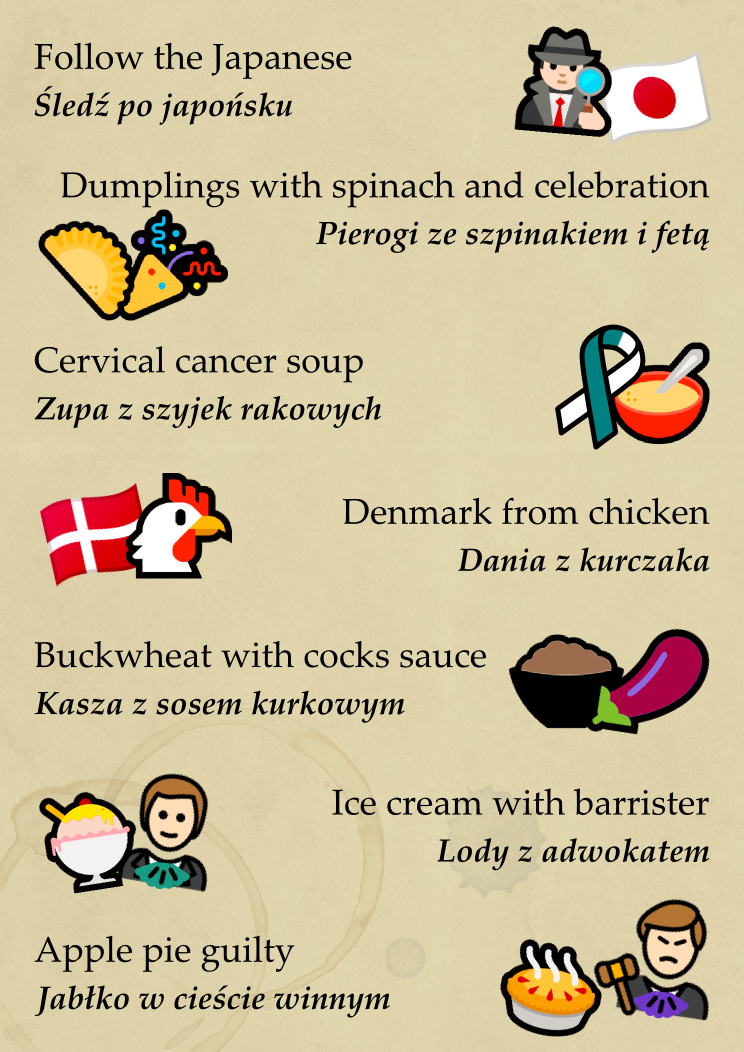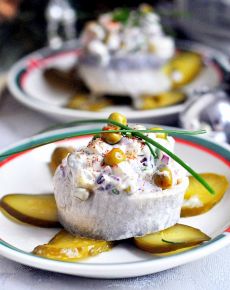A Menu Lost in Translation
On this first day of April, I'd like to propose a special dinner menu composed entirely of authentic Polish specialities. All of these dishes have been gleaned from actual English-language menus of various restaurants across Poland. Enjoy!

|
Oops, it looks like someone used a machine translator to render the Polish menu into English. Believe it or not, even some relatively upscale restaurateurs do this without even having the menu proof-read by someone who actually speaks English. The results are sometimes hilarious, sometimes just confusing, and some are downright off-putting to any visiting foreign tourist. Again, all of the mistranslations above were actually printed on menus (though never all at once)!
So, have you figured out what they were supposed to mean? You can type your guesses as comments to this Facebook post. Unless you speak Polish, of course, then you don't need to guess.
And if you're ready to see the correct answers, click ""Show actual meanings" below!
Follow the JapaneseLet's start with where the confusion came from. The Polish word "śledź" (pronounced shletch) is the imperative form of the verb "śledzić", meaning "to follow" or "to investigate". But it's also got another meaning, which would be more fitting in this context: "herring". So a better translation of "śledź po japońsku" would have been "Japanese-style herring". Now what the heck is that? The Japanese-style herring has probably about as much to do with Japan as Hawaiian pizza has to do with Hawaii. In fact, it's a very appetizing appetizer that was quite popular in Communist-era Poland. The recipe largely boils down to wrapping a marinated herring fillet around a hard-boiled egg. Perhaps the idea of wrapping a piece of fish around something reminded someone of maki sushi, giving rise to the Japanese association? The egg and the fish are typically arranged on a bed of canned green peas laced with mayo and decorated with slices of onions and pickles. The combination of fishy, salty, sour and fatty flavours means that this simple hors d'œuvre pairs perfectly with a shot of cold neat vodka. Here's a recipe written in the industrial style reminiscent of the Communist era this delicacy hails from:
|
